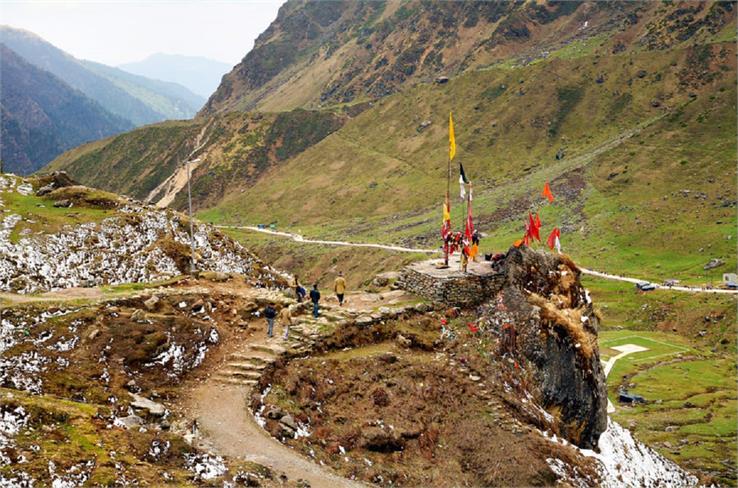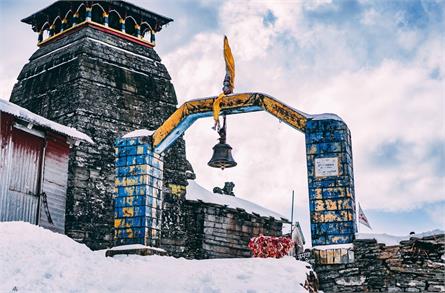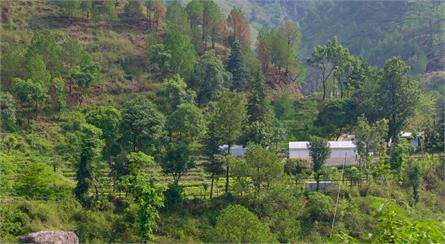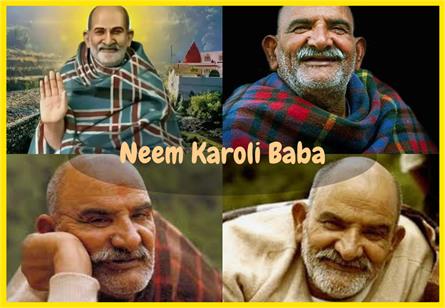Kedarnath Temple: A Journey of Faith, Adventure and Devotion

Explore the spiritual journey to # Kedarnath Temple in 2023 with # Panch Kedar # Things You must know!
In our country, Hindus have a lot of beliefs about pilgrimage, which has been going on since ancient times. There are many pilgrimage places in the country where people from every corner of the country come to visit. They believe that all the sins of life have been destroyed by visiting these pilgrimage places. When it comes to places of pilgrimage, the name of the Kedarnath temple of Uttarakhand first comes to the fore. Uttarakhand is also known as 'Dev Bhumi' or 'Land of God' It is considered the most sacred and favourable state of various religious places, devotion and pilgrimage. The northwestern part of Uttarakhand to Uttar Pradesh and a part atop the Himalayan mountain ranges are holy places. The state is famous mainly for its scenic features and the richness of the Himalayas, Terai and Bhabhar. The Tibet Autonomous Region is in the north of the state.
Also Read: Facts and Aspects of Uttarakhand
About Kedarnath Temple
Kedarnath Temple is at the highest altitude among the twelve Jyotirlingas in the country. This Dham is at an altitude of 3581 meters on the banks of the Mandakini River. It is the biggest Shiva temple in Uttarakhand, made by joining the boulders of stones. This temple is the temple of Lord Shiva Shankar, which is many years old. It is on the Garhwal Himalayan range near the Mandakini River in Kedarnath temple, Uttarakhand, India. It is one of Lord Shiva's twelve Jyotirlingas. The Mandakini River flows near this temple, and the view of the mountains covered with snow is very spectacular. People get attracted towards Kedarnath temple by seeing its peaceful atmosphere and fantastic scenery as if someone has mesmerized them. The deities from the Kedarnath temple are brought to Ukhimath for six months of winter worship. Lord Shiva is worshipped as the 'Lord of Kedar Khand' in the Kedarnath temple. It is a historical name that has been going on for centuries. This temple is one of the most important pilgrimage centres, especially for Hindus.
This temple is on a six feet high square platform. The central part of the temple is the mandap and the circumambulation path around the sanctum sanctorum. Nandi is sitting in the form of the bull outside the courtyard. It says that Adi Guru Shankaracharya founded the temple.
Let us tell you that to reach Kedarnath temple, one has to travel 15 kilometres on foot from Gaurikund.
Badrinath and Kedarnath temples are two major pilgrimage centres located in Uttarakhand. It has believed that the person who visits Badrinath Dham without visiting Kedarnath temple his journey becomes fruitless. It is said so because Lord Shiva had given a place to Lord Vishnu in Badrinath. Earlier, only Lord Shiva resided in Badrinath.
Also Read: Hill Station with Exotic Life-” Nainital “
Visit Months
For the darshan of Lord Kedarnath, this temple opens only for six months and remains closed for six months. Due to inclement weather, the temple or Kedarnath Yatra is open from late April to mid-November. During this period, people from far and wide come here to seek Lord Shivas' blessings. This temple is opened after Baisakhi and is closed on Padwa (Paruva Tithi) after Diwali. When the time of 6 months is over, the temple's priests light a lamp in this temple. Which keeps burning for the next six months; after six months, when this temple has opened, this lamp is found burning.
Temple Timing
The temple of Lord Kedar opens for devotees early in the morning.
There is special worship in the temple from 3:00 pm to 5:00 pm, and after that, the temple is closed for rest.
The temple has opened for the darshan of devotees at 5:00 pm.
After decorating the idol of Lord Shiva, aarti is performed from 7:30 to 8:30. The Kedarnath temple is closed at 8:30 pm.
Kedarnath Temple architecture
The architecture of Kedarnath temple is beautiful. This temple of Kedarnath is in Katyuri style. The temple roof is of wood, on the top of which there is a gold urn. The idols of Lord Shri Krishna, Pandavas, Draupadi, Nandi and other deities are in the hall at the entrance of Kedarnath temple. A grand idol of Nandi is outside the door of the temple.
The temple has three main parts: Garbha Griha, Central part, and Sabha Mandap. The Swayambhu Jyotirlinga of Lord Kedarnath is in the center of the sanctum sanctorum. Natural sacrificial and crystal beads are visible on the Jyotirlinga. In front of Jyotirlinga idol of Ganesha and Shree Yantra of Mata Parvati are present.
Four giant pillars around the Jyotirlinga are considered the symbol of the 4 Vedas. On these four pillars rests the roof of the enormous lotus-shaped temple.
Also Read: Almora - The Cultural Capital of Kumaon
History
The most famous history of Kedarnath Yatra takes us to the time of the Pandavas. It has believed that the Pandavas of Mahabharata built this temple by laying the foundation of Lord Shiva. But it got demolished because it became ancient. Then in the 8th century, Adi Guru Shankaracharya rebuilt the temple at the same holy place, currently known as the sacred temple of Kedarnath.
Mystery
Once, the Pandavas went to seek forgiveness from Lord Shiva on the advice of Lord Krishna after killing their brothers, the Kauravas, in the famous battle of Kurukshetra. But when Bholenath learned about this, he got angry and went to the Kedarnath temple. Then the Pandavas also reached Kedarnath following Bholenath. After that, Lord Shiva transformed into a bull and joined the herd of bulls as they fled the Pandavas. After that, Bhima took on his massive form and stood on two mountains with his feet. Bhima subdued all the animals, but Bhima grabbed Bholenath's back just as Lord Shiva was about to vanish. Shiva felt happy to see this longing of the Pandavas and appeared to them. After this, the Pandavas got free from this sin. After this, Pandavas had got the temple of Kedarnath constructed here. Even today, the bull's back has worshipped as an idol. The place from where lord Shiva disappeared is called Guptkashi.
Lord Shiva appeared in five distinct forms after leaving Guptkashi. These five locations are renowned as "Panch Kedar." Detailed information about Panch Kedar is given below.
1. Kedarnath(Back):
Kedarnath is a highly revered temple among devotees and is one of the five Panch Kedar temples dedicated to Lord Shiva. It's located at 3583 meters in the Himalayas and is believed to have been built by the Pandava brothers. According to legend, this is where Lord Shiva's Back/hump appeared.
2. Rudranath(Face):
Rudranath is a beautiful temple in the Himalayas and the third temple of Panch Kedar after Kedarnath temple and Tungnath. It is surrounded by rhododendron forests and is believed to be protected by the forest goddess Vandevi. The Pandavas saw the face of Shiva in the form of a bull here, and Shiva is worshipped in the form of Neelkanth. The temple is at an altitude of 2,286 meters and offers spectacular views of Nanda Devi, Nada Ghunti, and Trishul peaks. The trek starts from a village named Sagar, which is located at a distance of about 3 km from Gopeshwar. Although the trek is considered arduous, devotees of Shiva come here every year to pay their respects.
3. Tungnath(Hands):
It's a unique temple that is one of the tallest Shiva temples in the world! It's the tallest among the Panch Kedars and is at an altitude of 3,680 meters. Can you believe it's also the highest Shiva temple in the world? This temple has a rich history, as it's said that the hands of Lord Shiva appeared in the form of a bull at this location. The Pandavas then constructed the Tungnath temple. It's also believed that Rama meditated on the Chandrashila Peak, located close to Tungnath.
4. Madhyamaheshwar(Navel and stomach):
Madhyamaheshwar is a beautiful temple in the Himalayas of Garhwal, Uttarakhand. It is situated in a village named Gunder at an altitude of 3497 meters. This temple is where Shiva's middle or navel part is worshipped. The temple offers spectacular views of Kedarnath temple, Chaukhamba and Neelkanth. To reach here, you can trek about 18 km from Ukhimath. The temple is in the middle of a lush green meadow that overlooks the Chaukhamba peaks. The sanctum sanctorum of the temple houses a navel-shaped Shivling.
5. Kalpeshwar(Hair):
This temple is believed to be where Lord Shiva's head and hair appeared. It is 2200 meters in the Himalayas in the Urgam Valley, offering breathtaking views. Kalpeshwar is the last temple to be visited while visiting the Panch Kedar temples. Unlike the other four temples, it remains open throughout the year. Here, Shiva is worshipped as Jatadhar or Jateshwar. To reach the temple, you can trek for about 12 km.
Another Story
Another story about the Kedarnath temple is related to Narayan, who went to Badrika village to worship Parthiv and do penance, and there, Lord Shiva appeared in front of him. Narayan requested that Lord Shiv remains in his original form for the benefit of humanity. Satisfying their desire, Ruler Shiva consented to stay at the spot presently known as Kedareshwar.
Also Read: World’s Famous Greatest Saint- Neem Karoli Baba
Tragedy Happen in 2013 By Floods
In 2013, a tragedy occurred in the state of Uttarakhand in India. On June 16 and 17, 2013, along with other parts of Uttarakhand, Kedarnath Valley experienced unprecedented floods. In fact, on June 16, at around 7:30 pm, the landslide started near the Kedarnath temple with a loud rumble. After this fierce roar, tremendous water fell into Chorabari Tal or Gandhi Tal under the Mandakini River at about 8:30 am. On June 17, 2013, at around 6:40 am, Saraswati River and Chorbari Tal or Gandhi Tal started increasing rapidly. Due to this, a large amount of rocks and stones started flowing along with it in its flow. Where on one side, whoever came in front of the flood water, was taking it away with him.
In contrast, a large rock arrived and became entangled behind the Kedarnath temple. The temple was shielded from the terrible flood by that rock. That rock protected the temple from that terrible flood. All the debris flowing with the flood water kept flowing from both sides of the temple. But nothing happened to the temple. Even then, people feared the flowing water and debris would wash away the temple, but it did not happen. It was as if a flood of death had come at that time. Even so, the rock wedged behind the temple prevented anything from happening.
That rock is considered Bhimsheela, who protected the temple during the flood. People hid inside the temple for several hours until the Indian Army moved them to safer locations.
Kedarnath Yatra Start and Close
The doors of Kedarnath Temple opened three days after Akshaya Tritiya on April 25 and closed every year after two days of Diwali, i.e. on the day of Bhai Dooj. The doors of Kedarnath temple will be closed on November 14, 2023.
Registration Process
Let us tell you that if you want to go to Kedarnath Yatra by helicopter, you have to register in advance. For this, you can register either online or offline. All devotees should have darshan of Baba Kedarnath, so the administration has made such a system that some devotees can have darshan of Baba Kedarnath Shivling in a 1-1 hour slot. Due to this, there will be no crowd near the temple, and everyone can have a darshan. The online and offline registration process details are as follows:
1. Online Registration
If you want to register online, you can do Char Dham Yatra Registration or Kedarnath Yatra Registration by visiting the official website of IRCTC. Apart from this, registration can also register by visiting the portal started by the Government of Uttarakhand.
2. Offline Registration
For offline registration, there are many counters on the Char Dham Yatra route in Uttarakhand where you can go and register.
Weather
Kedarnath experiences a cold and snowy winter from November to April, with temperatures dropping to as low as -15°C. The summer season, from May to June, is mild and pleasant, with temperatures ranging from 15°C to 30°C. Monsoon season starts in July and lasts till September, bringing heavy rainfall and landslides, making it difficult to visit the region. Planning your visit to Kedarnath Temple during the summer when the weather is favourable for travel and sightseeing is advisable.
Things You must know before going to Char Dham/ Kedarnath Yatra
Reaching the sacred site of Bhole Nath in Kedarnath requires a journey of approximately 16 kilometres on foot. While some travellers enlist the help of horses or mules to ease the trek, this option poses a significant danger for the animals. Tragically, many of these animals do not survive the journey, making it a challenging and unhappy experience for all involved.
It's unfortunate to hear about the mistreatment of those mules by their owner. It's important to remember that animals have limitations, and they, too, need rest and proper care. It's heartbreaking that they cannot communicate their exhaustion and discomfort. The mules also need food and energy to work efficiently. It's concerning that the owner may neglect their needs in favour of profit. It's common for people who cannot trek to use mules as a means of transportation, but it's essential to be mindful of the animal's well-being. If you plan to go to Kedarnath Yatra, where mules hire for trekking, ensure you are not contributing to their harm. We should treat all living beings with respect and kindness, as they, too, are part of God's creation.
Tourist Places Near Kedarnath
Apart from Kedarnath Yatra, several other nearby tourist places are worth exploring. One such place is Badrinath, which is around 210 kilometres from Kedarnath. This holy town is home to the famous Badrinath Temple, dedicated to Lord Vishnu. Another popular destination is the Valley of Flowers National Park, 35 kilometres from Govindghat. This picturesque valley is home to various flora and fauna, including several rare and endangered species. Other attractions in the area include Hemkund Sahib, which is considered one of the holiest Sikh shrines in India, and the Nanda Devi National Park, which is a UNESCO World Heritage Site. With so many places to visit, a trip to Kedarnath Temple and its surrounding areas will surely be a memorable experience. Here are some beautiful places are given below.
1. Triyuginarayan
It believes that the marriage of Lord Shiva and Mother Parvati took place at this place. This place has trekking of 5 km from Sonprayag. This place is 13 meters away from Gauri Kund.
2. Guptkashi
Guptkashi is also known as "Hidden Kashi". It's the place where Lord Shiva hid from the Pandavas. It is famous for the Vishwanath and Ardha Narishwar temples.
3. Gauri Kund Chopta
Gauri Kund is a small village situated near Kedarnath. At this place, Mother Parvati had done severe penance to get Shiva.
4. Panch Kedar
Along with Kedarnath, you can also visit four other Kedars – Madam Maheshwar, Tungnath, Rudranath and Kalpeshwar.
5. Shankaracharya Samadhi
Adi Guru Shankaracharya took Samadhi to this place. It is a place with a peaceful atmosphere.
6. Bhairav Nath Temple
Bhairav Nath Temple is at a distance of 1 kilometre from Kedarnath Temple.
7. Kedar Giri Pind
The Kedar Giri comprises the Kedarnath, Kedarnath Temple dome and the massive Kuntha mountains, from which many glaciers flow.
8. Vasuki Tal
Vasuki Tal is at a distance of 6 kilometres from Kedarnath Temple. The view of the beautiful peaks of Chaukhamba is visible from here.
9. Agastya Muni Ashram
Agastmuni is on the banks of the Mandakini River at an altitude of 1000 meters above sea level, named after the sage Agastya Muni. There is an Agastya temple and a Shiva temple here.
10. Gandhi Sarovar
Gandhi Sarovar is a small lake at the foothills of Kedarnath Temple. This place is also known as Chaurabari Tal.
11. Moon Rock/Chandra Shila
Chandra Shila (4000 meters above sea level) is one of the most popular places in Kedarnath Temple. Lord Rama prayed to Lord Shiva for forgiveness here after killing Ravana.
How To Reach Kedarnath Temple
Knowing how to get there is essential if you plan a trip to Kedarnath Temple in Uttarakhand. Gaurikund is the last motorable Road from Kedarnath, so if you're driving, that's as far as you can go. You'll need to trek along the Himalayas to reach the temple. If you're flying, you must pass by Jolly Grant Airport in Dehradun and hire a cab or taxi from outside the airport. The town is also well connected to Dehradun and Haridwar by bus. Train travellers must leave at Rishikesh Railway Station and take a bus to Kedarnath. With these travel tips, you'll be able to reach Kedarnath Temple with ease.
1. By Air
To reach Kedarnath Temple, the nearest civil airhead is Jolly Grant Airport in Dehradun. This airport is around 250 km from Kedarnath Temple and connects major cities in India, such as New Delhi, Mumbai, Kolkata, and Chennai. Many flights operate to and from these cities, with various flight timing and fare options. Once you arrive in Dehradun, you can hire a cab or take a bus to reach Kedarnath. You'll need to trek along the Himalayas to reach the Kedarnath temple. Alternatively, if you're driving, you can go as far as Gaurikund, which is the last motorable Road from Kedarnath temple.
2. By Road
There are plenty of options available to reach this holy pilgrimage site. If you land in New Delhi, you can take a bus from Kashmere Gate Bus Terminal or Anand Vihar Bus Terminal to reach Dehradun, around 260 km from the capital. You can hire a cab from Dehradun for a more personalized experience. The taxis ply between Dehradun and Kedarnath temple, and the fare varies according to the size and seating capacity of the vehicle. Another option is to take a bus from Haridwar, around 125 km from Kedarnath.
3. By Train
If you are looking for a convenient way to get there, consider taking a train to Rishikesh Railway Station, about 210 km from Gaurikund. You can easily catch a bus from Gaurikund, the nearest motorable area from Kedarnath. Once in Gaurikund, you'll have plenty of options for buses and taxis to take you to Kedarnath.


















